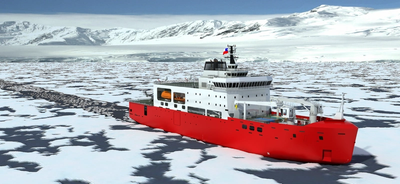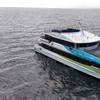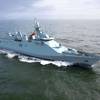GE’s Marine Solutions was chosen by ASMAR Shipyards to provide the complete scope of an integrated marine propulsion system for the Chilean Navy’s new Antarctic icebreaking Polar Class vessel. It will replace the retired icebreaker to continue the navy’s Antarctic expedition for search and rescue missions, scientific research, logistic support and resupplying bases in the Chilean Antarctic Territory.
The 110-meter long vessel will have GE’s full marine propulsion system to power and propel the vessel, including diesel electric propulsion, GE’s International Maritime Organization’s (IMO) Tier 3-compliant diesel engine, a complete propulsion shaft line and propeller, a tunnel thruster, SeaStream Dynamic Positioning (DP) and vessel automation system.
The vessel has received Lloyd’s Register PC 5 polar class notation, reflecting the strong icebreaking capability of the vessel. In fact, with an installed power of 14.5 megawatts, it will be capable of breaking 1 meter of ice at 3 knots.
“The ice-going capabilities require the machinery onboard the vessel, such as the main propulsion, to be highly robust to ensure the safety and the survivability of the vessel. That is not all. Given the vessel’s specific mission profile, we are also looking for clean propulsion technology that will meet the requirement of the highly stringent environment regulations in the Antarctic area. GE’s one-stop solution is the answer to all these challenges,” said Lieutenant Commander Jorge Maldonado, project manager for the Chilean Navy.
GE said its marine IMO Tier 3 diesel engine reduces key emissions up to 70 percent and enables in-engine compliance with IMO Tier 3 emissions standards. It also provides a significantly less complex solution compared to urea-based selective catalytic reduction (SCR) systems, as it does not require any additional on-board SCR equipment or storage provisions for urea as well as no dockside support infrastructure for urea storage and processing.
Moreover, GE added its mariner-friendly Ecomagination qualified SeaStream DP system, in the “Energy-Efficiency” mode, can generate fuel savings up to 10 percent or more, with an associated nitrous oxide reduction up to 20 percent, depending on environmental factors and the operational profile.
“This project is a prime example that demonstrates the value of a full-system solution,” said Andy McKeran, general manager, GE’s Marine Solutions. “GE will be responsible for manufacturing and procuring all equipment and integrating it into a system to achieve improved reliability, de-risking the project. Our cutting-edge clean technology also stands out as a key differentiator to enable a cleaner marine environment, building a vessel that is fit for its mission.”













